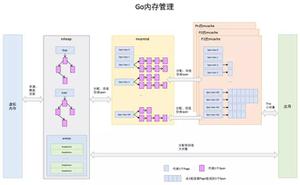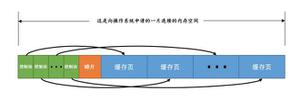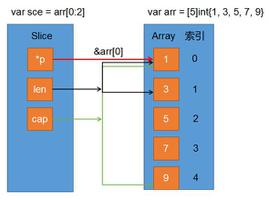Golang基础之fmt.Printf

背景
用go语言打印的时候,经常看到各种不同的打印方式,有println,有fmt.Println,有fmt.Printf
区别和用法
fmt.Println的源码
// Println formats using the default formats for its operands and writes to standard output.// Spaces are always added between operands and a newline is appended.
// It returns the number of bytes written and any write error encountered.
func Println(a ...interface{}) (n int, err error) {
return Fprintln(os.Stdout, a...)
}
fmt.Printf的源码如下
// Printf formats according to a format specifier and writes to standard output.// It returns the number of bytes written and any write error encountered.
func Printf(format string, a ...interface{}) (n int, err error) {
return Fprintf(os.Stdout, format, a...)
}
内置的println的源码如下:
// The println built-in function formats its arguments in an// implementation-specific way and writes the result to standard error.
// Spaces are always added between arguments and a newline is appended.
// Println is useful for bootstrapping and debugging; it is not guaranteed
// to stay in the language.
func println(args ...Type)
根据官方给的源码和注释可以得到以下结论:
- fmt.Println :可以打印出字符串,和变量。
- fmt.Printf : 只可以打印出格式化的字符串, println会根据你输入格式原样输出,printf需要格式化输出并带输出格式
- 内置的println:属于输出到标准错误流中并打印,官方不建议写程序时候用它。可以在debug时候用
fmt.Printf比较实用,可以格式化自己想要的数据结构
package mainimport "fmt"
import "os"
type point struct {
x, y int
}
func main() {
//Go 为常规 Go 值的格式化设计提供了多种打印方式。例如,这里打印了 point 结构体的一个实例。
p := point{1, 2}
fmt.Printf("%v
", p) // {1 2}
//如果值是一个结构体,%+v 的格式化输出内容将包括结构体的字段名。
fmt.Printf("%+v
", p) // {x:1 y:2}
//%#v 形式则输出这个值的 Go 语法表示。例如,值的运行源代码片段。
fmt.Printf("%#v
", p) // main.point{x:1, y:2}
//需要打印值的类型,使用 %T。
fmt.Printf("%T
", p) // main.point
//格式化布尔值是简单的。
fmt.Printf("%t
", true)
//格式化整形数有多种方式,使用 %d进行标准的十进制格式化。
fmt.Printf("%d
", 123)
//这个输出二进制表示形式。
fmt.Printf("%b
", 14)
//这个输出给定整数的对应字符。
fmt.Printf("%c
", 33)
//%x 提供十六进制编码。
fmt.Printf("%x
", 456)
//对于浮点型同样有很多的格式化选项。使用 %f 进行最基本的十进制格式化。
fmt.Printf("%f
", 78.9)
//%e 和 %E 将浮点型格式化为(稍微有一点不同的)科学技科学记数法表示形式。
fmt.Printf("%e
", 123400000.0)
fmt.Printf("%E
", 123400000.0)
//使用 %s 进行基本的字符串输出。
fmt.Printf("%s
", ""string"")
//像 Go 源代码中那样带有双引号的输出,使用 %q。
fmt.Printf("%q
", ""string"")
//和上面的整形数一样,%x 输出使用 base-16 编码的字符串,每个字节使用 2 个字符表示。
fmt.Printf("%x
", "hex this")
//要输出一个指针的值,使用 %p。
fmt.Printf("%p
", &p)
//当输出数字的时候,你将经常想要控制输出结果的宽度和精度,可以使用在 % 后面使用数字来控制输出宽度。默认结果使用右对齐并且通过空格来填充空白部分。
fmt.Printf("|%6d|%6d|
", 12, 345)
//你也可以指定浮点型的输出宽度,同时也可以通过 宽度.精度 的语法来指定输出的精度。
fmt.Printf("|%6.2f|%6.2f|
", 1.2, 3.45)
//要最对齐,使用 - 标志。
fmt.Printf("|%-6.2f|%-6.2f|
", 1.2, 3.45)
//你也许也想控制字符串输出时的宽度,特别是要确保他们在类表格输出时的对齐。这是基本的右对齐宽度表示。
fmt.Printf("|%6s|%6s|
", "foo", "b")
//要左对齐,和数字一样,使用 - 标志。
fmt.Printf("|%-6s|%-6s|
", "foo", "b")
//到目前为止,我们已经看过 Printf了,它通过 os.Stdout输出格式化的字符串。Sprintf 则格式化并返回一个字符串而不带任何输出。
s := fmt.Sprintf("a %s", "string")
fmt.Println(s)
//你可以使用 Fprintf 来格式化并输出到 io.Writers而不是 os.Stdout。
fmt.Fprintf(os.Stderr, "an %s
", "error")
}
参考
https://blog.csdn.net/zgh0711/article/details/78843361
https://segmentfault.com/a/1190000015302789
以上是 Golang基础之fmt.Printf 的全部内容, 来源链接: utcz.com/z/512467.html





